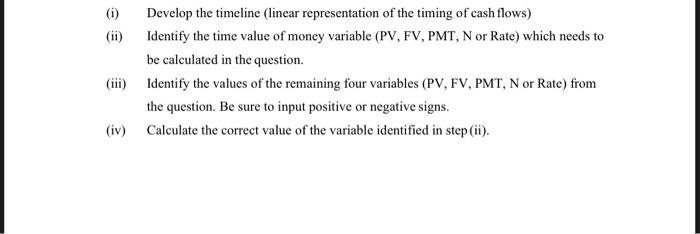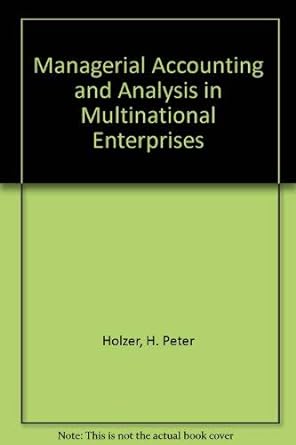(ii) (i) Develop the timeline (linear representation of the timing of cash flows) Identify the time value of money variable (PV, FV, PMT, N or Rate) which needs to be calculated in the question. (iii) Identify the values of the remaining four variables (PV, FV, PMT, N or Rate) from the question. Be sure to input positive or negative signs. (iv) Calculate the correct value of the variable identified in step (ii). 8. Your company has received a $75,000 loan from an industrial finance company. The annual payments are $14,058.30. If the company is paying 10 percent interest per year, how many loan payments must the company make? Round to the nearest number of years. 9. You are ready to retire. A glance at your 401(k) statement indicates that you have $2,800,000. If the funds remain in an account earning 5% annually, how much could you withdraw at the end of each year for the next 25 years? Round to two decimal places. 10. If you wish to accumulate $380,000 in your child's college fund after 18 years and can invest at a 9% annual rate, how much must you invest at the end of each year if the first deposit is made at the end of the first year? Round to two decimal places. (ii) (i) Develop the timeline (linear representation of the timing of cash flows) Identify the time value of money variable (PV, FV, PMT, N or Rate) which needs to be calculated in the question. (iii) Identify the values of the remaining four variables (PV, FV, PMT, N or Rate) from the question. Be sure to input positive or negative signs. (iv) Calculate the correct value of the variable identified in step (ii). 8. Your company has received a $75,000 loan from an industrial finance company. The annual payments are $14,058.30. If the company is paying 10 percent interest per year, how many loan payments must the company make? Round to the nearest number of years. 9. You are ready to retire. A glance at your 401(k) statement indicates that you have $2,800,000. If the funds remain in an account earning 5% annually, how much could you withdraw at the end of each year for the next 25 years? Round to two decimal places. 10. If you wish to accumulate $380,000 in your child's college fund after 18 years and can invest at a 9% annual rate, how much must you invest at the end of each year if the first deposit is made at the end of the first year? Round to two decimal places








